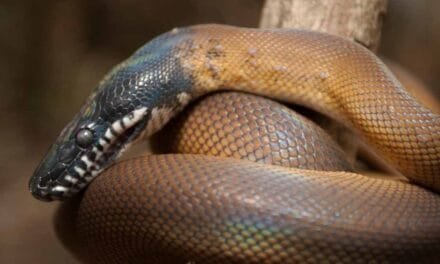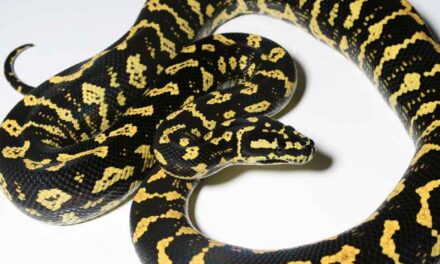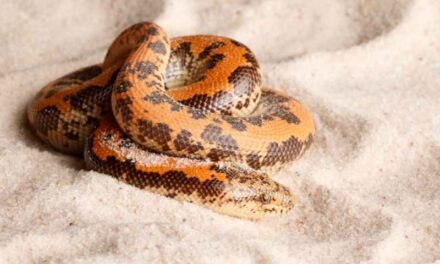Pythons are among the most impressive and diverse snakes in the world, with some species reaching over 20 feet in length and weighing more than 200 pounds. But how did these giant reptiles evolve from their legged ancestors? And what are the secrets behind their remarkable adaptations for hunting, feeding, and reproducing? In this blog post, we will explore the evolution of pythons, from their origins in the Cretaceous period to their current distribution and diversity across Africa, Asia, and Australia.
The Origin of Pythons
Pythons belong to the family Pythonidae, which is part of the superfamily Pythonoidea, along with sunbeam snakes (Xenopeltidae) and the Mexican burrowing python (Loxocemus bicolor). These snakes share a common ancestor that lived about 100 million years ago, during the late Cretaceous period¹. This ancestor was probably a small, burrowing snake that had vestigial legs and fed on small vertebrates and invertebrates.
The Pythonidae family diverged from the other pythonoids about 80 million years ago, and split into two main lineages: the basal pythons (Calabaria reinhardtii and Liasis spp.) and the advanced pythons (the rest of the genera)². The basal pythons are mostly found in Africa, while the advanced pythons are more widespread and diverse, inhabiting various habitats from rainforests to deserts.
The Loss of Legs
One of the most striking features of pythons is their lack of legs, which is a result of a long evolutionary process that involved changes in their genes, development, and morphology. Pythons are not the only snakes that have lost their legs; in fact, most snakes are legless, except for a few groups that have retained some remnants of limbs, such as boas, boids, and colubrids.
The loss of legs in snakes is related to their adaptation to burrowing and slithering through narrow spaces. Legs would have been a hindrance for these modes of locomotion, as they would have increased friction and drag. Moreover, the legs would have added weight and complexity to the snake’s body plan, which would have reduced its efficiency and flexibility.
The genetic basis for the loss of legs in snakes involves a mutation in a regulatory element called an enhancer that controls the expression of a gene called Sonic Hedgehog (Shh). Shh is a key gene that is involved in limb development in vertebrates, as it determines the identity and polarity of the limb buds. In lizards, Shh is activated by the enhancer and drives limb development all the way to the fingers and toes. In snakes, however, the enhancer is mutated and cannot activate Shh properly, resulting in the absence or reduction of limbs³.
Interestingly, some pythons still have traces of legs in their bodies. For example, some species have small claws or spurs near their cloaca that are derived from the pelvic girdle. These spurs are used by males to stimulate females during mating. Moreover, some pythons show signs of limb development during their embryonic stages.
For instance, researchers have found that Shh is briefly activated in python embryos but then switches off due to another mutation in the enhancer. This suggests that pythons still have the potential to grow legs, but they need further genetic changes to overcome their developmental constraints.
The Growth of Size
Another remarkable feature of pythons is their large size, which makes them one of the largest snakes on Earth. The largest python species is the reticulated python (Python reticulatus), which can reach over 30 feet in length and weigh more than 300 pounds. The smallest python species is the anthill python (Antaresia perthensis), which can grow up to 2 feet in length and weigh less than 2 pounds.
The evolution of size in pythons is related to their adaptation to feeding on large prey items. Pythons are ambush predators that rely on stealth and camouflage to catch unsuspecting animals. They use their sharp teeth and powerful jaws to grab their prey and then wrap their muscular bodies around it to constrict it until it suffocates or dies from cardiac arrest. Pythons can swallow prey whole by dislocating their lower jaw and expanding their skin and ribs. They can digest almost everything except for hair, feathers, scales, and bones.
The ability to feed on large prey items gives pythons an advantage over other predators that have to hunt more frequently or compete for resources. However, it also comes with a cost
Works Cited:
(1) Pythonidae – Wikipedia. https://en.wikipedia.org/wiki/Pythonidae
(2) Snakes Evolved Out of Their Legs—but They Still Have the Gene. https://www.nationalgeographic.com/science/article/snakes-grow-legs-evolution
(3) Pythons and boas shed new light on reptile evolution. https://www.sciencedaily.com/releases/2016/06/160614100351.htm






The site offers a lot of engaging and useful information.
Here, you can find many topics that provide insights.
Users will benefit from the content shared through this platform.
Every page is organized clearly, making it convenient to use.
The content are easy to understand.
There are guides on many areas.
Whether you’re looking for inspiration, this site has what you’re looking for.
In general, this resource is a excellent platform for information seekers.
https://stolice.info/